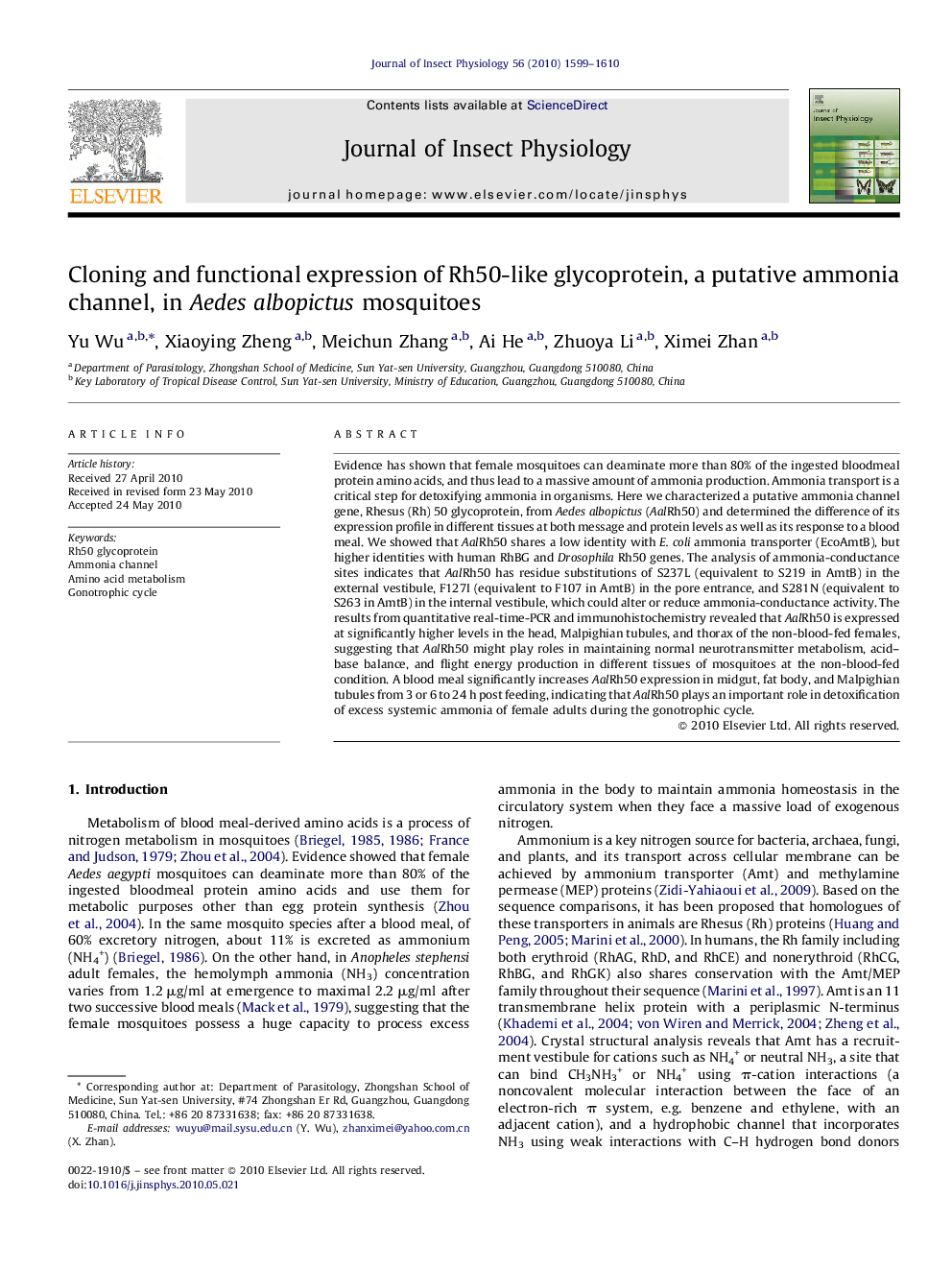| Article ID | Journal | Published Year | Pages | File Type |
|---|---|---|---|---|
| 2840810 | Journal of Insect Physiology | 2010 | 12 Pages |
Evidence has shown that female mosquitoes can deaminate more than 80% of the ingested bloodmeal protein amino acids, and thus lead to a massive amount of ammonia production. Ammonia transport is a critical step for detoxifying ammonia in organisms. Here we characterized a putative ammonia channel gene, Rhesus (Rh) 50 glycoprotein, from Aedes albopictus (AalRh50) and determined the difference of its expression profile in different tissues at both message and protein levels as well as its response to a blood meal. We showed that AalRh50 shares a low identity with E. coli ammonia transporter (EcoAmtB), but higher identities with human RhBG and Drosophila Rh50 genes. The analysis of ammonia-conductance sites indicates that AalRh50 has residue substitutions of S237L (equivalent to S219 in AmtB) in the external vestibule, F127I (equivalent to F107 in AmtB) in the pore entrance, and S281N (equivalent to S263 in AmtB) in the internal vestibule, which could alter or reduce ammonia-conductance activity. The results from quantitative real-time-PCR and immunohistochemistry revealed that AalRh50 is expressed at significantly higher levels in the head, Malpighian tubules, and thorax of the non-blood-fed females, suggesting that AalRh50 might play roles in maintaining normal neurotransmitter metabolism, acid–base balance, and flight energy production in different tissues of mosquitoes at the non-blood-fed condition. A blood meal significantly increases AalRh50 expression in midgut, fat body, and Malpighian tubules from 3 or 6 to 24 h post feeding, indicating that AalRh50 plays an important role in detoxification of excess systemic ammonia of female adults during the gonotrophic cycle.
